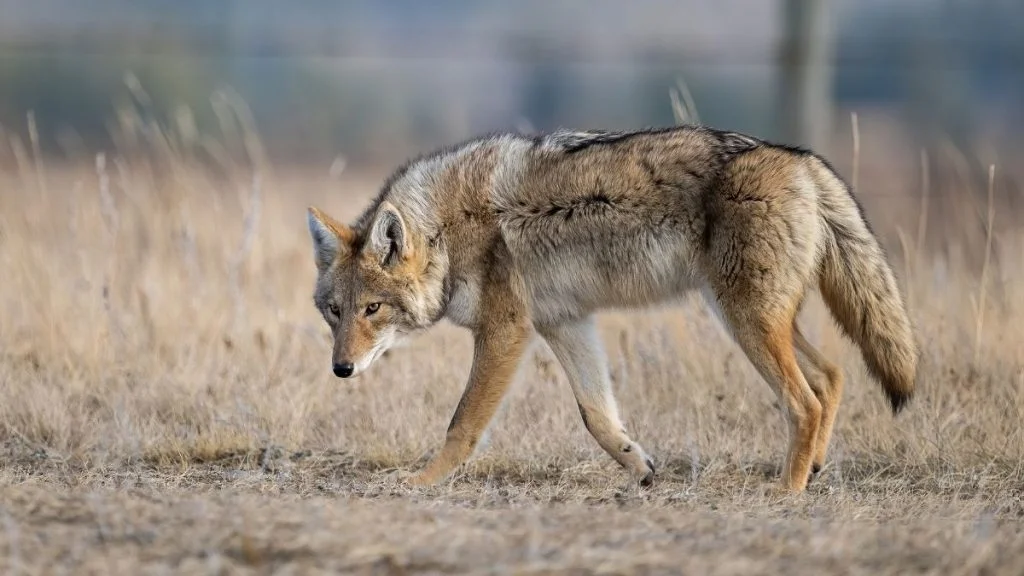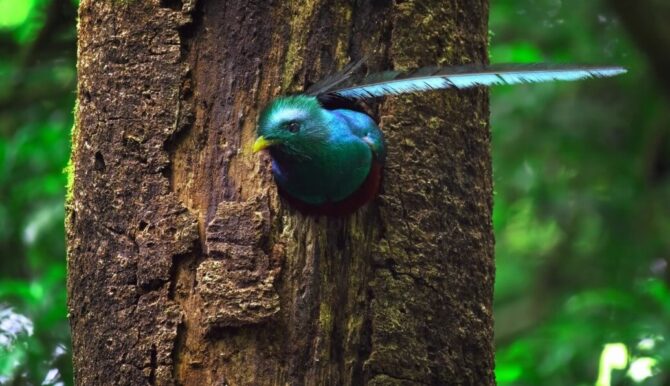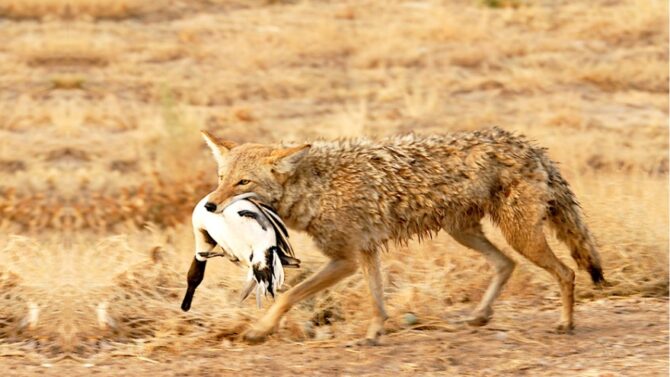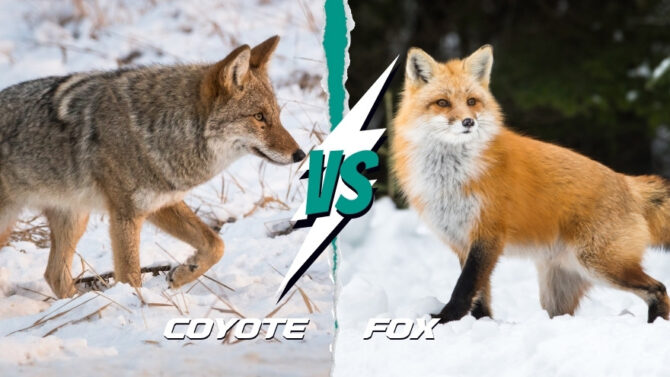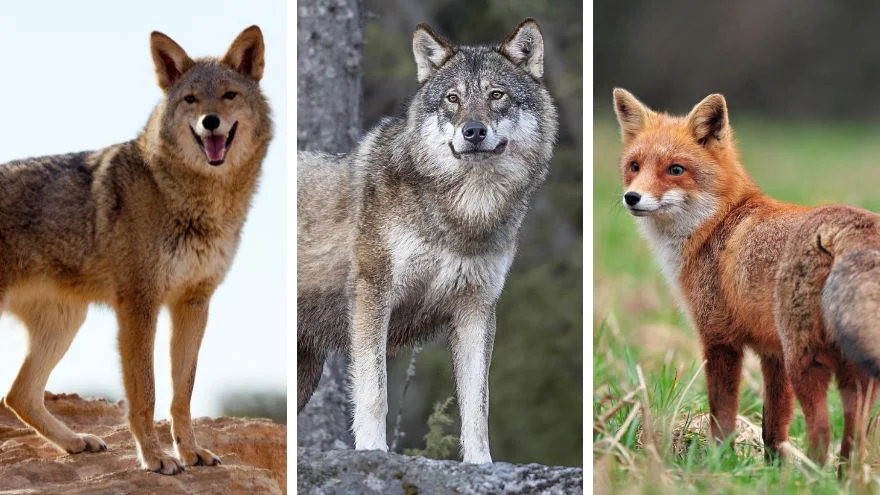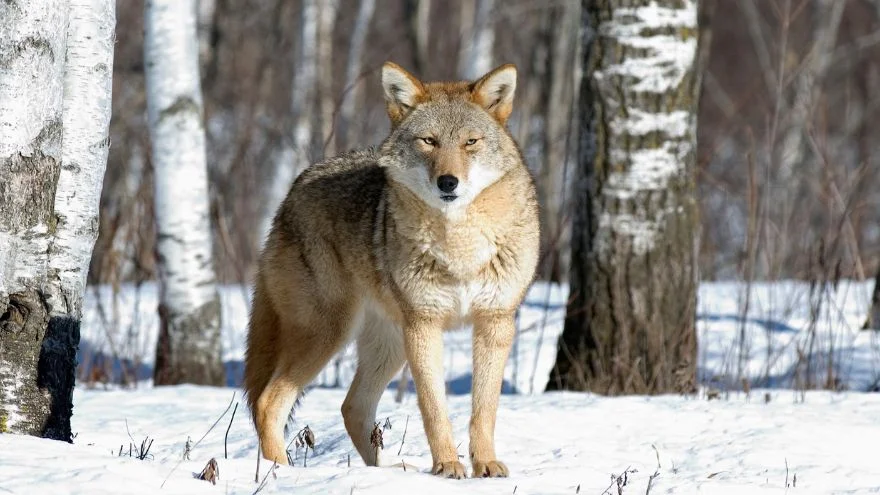Coyotes are essential to our ecosystem, roaming the woods in North America and Asia. These fierce predators are intelligent and highly adaptive wild dog species.
They help keep the numbers of other relatively small carnivores like foxes in check and generally assist in finding the balance of some mammalian species.
But what are coyote predators? You may be surprised to find out that they are on the menu for some unexpected animals in the wild.
What Eats Coyotes?
Although coyotes are among the most dangerous predators in the wild, they are not at the top of the food chain.
Coyotes are often eaten by larger carnivores like bears, cougars, gray wolves, American alligators, grizzly and American black bears, golden eagles, and Canada lynx.
This article will thoroughly examine the top predators of coyotes and how they kill their prey. Also included is detailed information on how they adapt to their environment.
Related: What Do Coyotes Eat? A Closer Look At Coyote Diet
Coyote Predators: Top 10 Animals That Eat Coyotes
1. Cougars
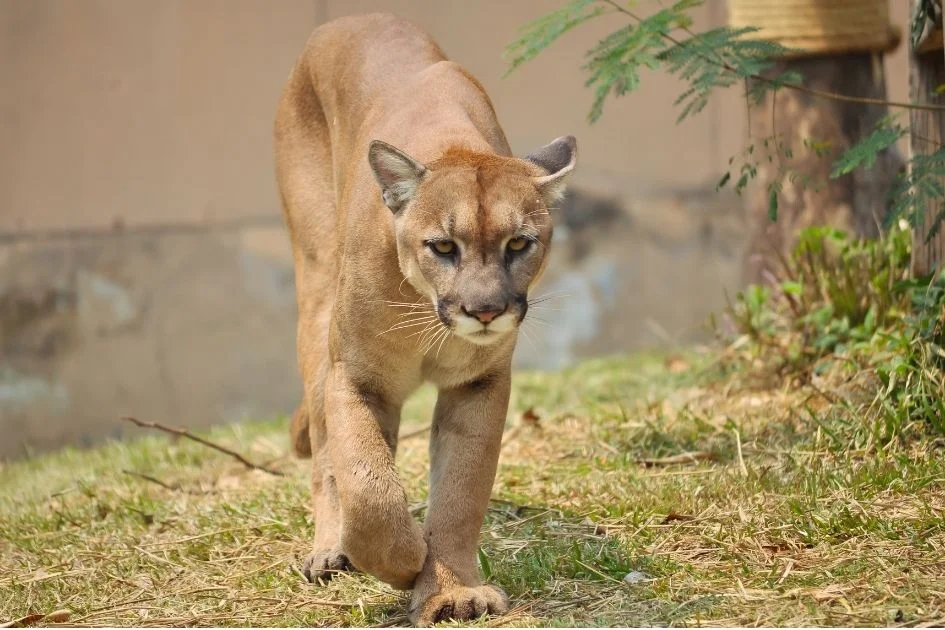
- Scientific Name: Puma concolor
- Classification: Mammalia
- Size: Height 30 inches; Length: 7–8 feet; Weight: 140–180 pounds
- Habitat: Canyons, terrains, deserts, and coastal forests
- Diet: Carnivore
- Range: Canada, United States
The subfamily Felinae includes huge, wild cats known as cougars (also known as puma). They are well known for being ambush predators that eat various animals, including coyotes.
The fact that cougars can give up a kill to a pack of coyotes under pressure disqualifies them from the title of apex predator.
Cougars have no patience for coyotes. They favor settings with thick bushes or mountainous terrain since they are excellent stalkers. Sometimes, the cougar may ambush and devour them without any difficulty.
They are skilled hunters who focus on small mammals, deer, rats, and coyotes. Cougars will sneak up on their victim, stalk it, and then attack quickly, biting the animal in the back of the neck to finish it off.
2. Wolves
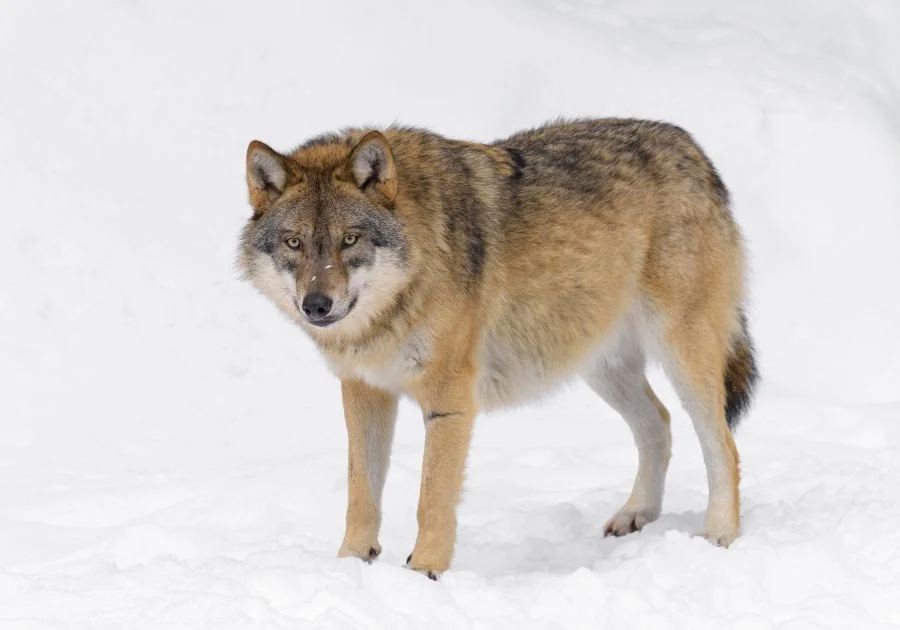
- Scientific Name: Canis lupus
- Classification: Mammalia
- Size: Height 80–85cm; Length: 1.6m; Mass: 80kg
- Habitat: Woodlands, forests, and prairies.
- Diet: Carnivores
- Range: North America, Europe, and Asia
Wolves are coyote cousins, and historically, they have been one of the main predators of the coyote.
Because wolves hunt in groups and breed for life, they are friendly animals. However, they are carnivorous creatures that eat bison, coyotes, and other animals.
Gray wolves do not typically feed on coyotes, although they will attack them if hungry. They stretch out and encircle their victim as they attack it in groups.
Some wolves target the nose, while others concentrate on the neck, side, and back.
3. American Black Bears

- Scientific Name: Ursus americanus
- Classification: Mammalia
- Size: Height: 5–6 feet; Weight: 200–600 pounds
- Habitat: Mountain regions and Forests
- Diet: Omnivore
- Range: North America
The highlands and forests are home to black bears. They have short heads and sturdy necks for stability.
Black bears consume coyotes, but only 5% of their diet consists of animal products. In other words, they rarely prey on other animals, which make up a minor fraction of their diet.
Black bears also eat beavers, raccoons, bobcats, small mammals, and even wolves.
The location and time of year significantly impact a black bear’s diet, but about 80% of their diet is often composed of plant-based foods.
4. Grizzly Bears
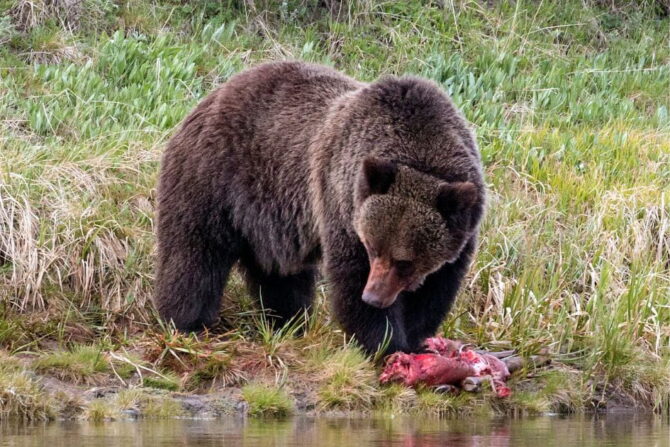
- Scientific Name: Ursus arctos horribilis
- Classification: Mammalia
- Size: Weight: 180–360 kg; Length: 198 cm; Height: 102 cm
- Habitat: Forests and Mountainous regions
- Diet: Omnivore
- Range: North America
Grizzly bears will kill and eat coyotes if given a chance. Additionally, they eat both plant and animal debris. Their diets consist of a lot of plant-based foods.
However, grizzlies will eat coyotes if food is scarce. Although they don’t go after them directly, bears occasionally kill these canines due to conflicts over the carcass or while protecting their young.
Although they are large and appear “clumsy,” bears are excellent hunters. The grizzly bear’s top speed is an average of 35 mph, nearly as fast as these canines.
However, coyotes can move faster over long ranges than bears because they are lighter.
When a bear attacks, it will charge at a coyote and seize it by the back. Bears would devour them alive, beginning by biting the animal’s neck once it had captured it.
Additionally, a bear would rip the skin apart with its powerful, non-retractable claws. Even creatures far larger than bears can kill these canines with just one paw strike.
5. American Alligators
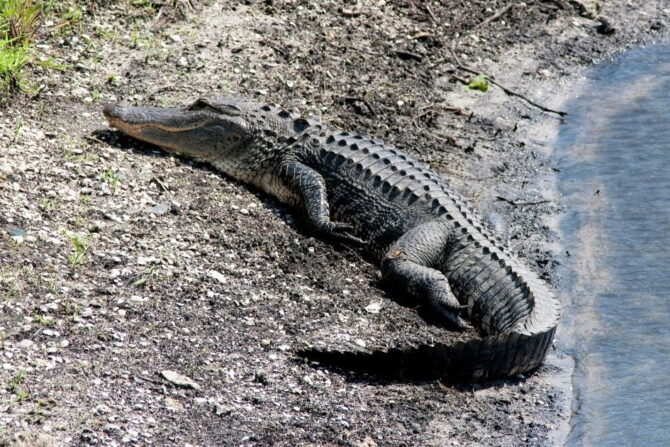
- Scientific Name: Alligator mississippiensis
- Classification: Reptilia
- Size: Length: 2.6–4.6 meters; Weight: 91–560 kg
- Habitat: freshwater rivers, lakes, swamps, and marshes
- Diet: Carnivore
- Range: United States
American alligators are huge killers primarily found in wetlands and weigh around 230 kg. They are considered the biggest reptiles in North America and extremely lethal and ferocious apex predators.
Their diet includes frogs, aquatic animals, birds, coyotes, and other animals. Like other exploitative animals, the alligator will attack anything that drinks the water.
Alligators strike their victim quickly, go for the head, and then drag it underneath to conduct a death roll, which serves the prey’s appendages.
They are extremely voracious, and the clenching of an alligator’s teeth can instantly kill a coyote.
6. Canada lynx
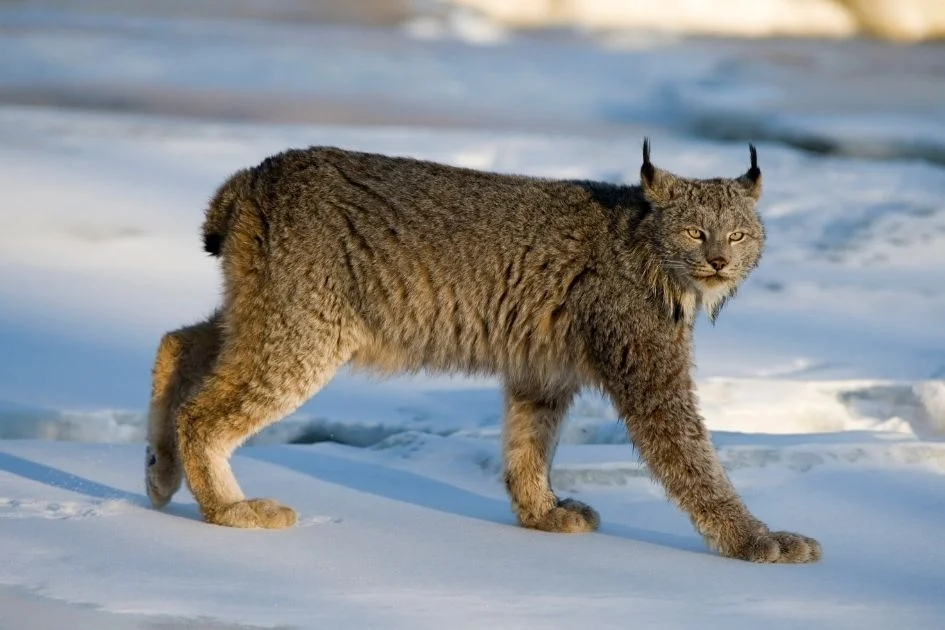
- Scientific Name: Lynx canadensis
- Classification: Mammalia
- Size: Height: 48–56 cm (at shoulder); Length: 76–110 cm; Weight: 8–11 kg
- Habitat: boreal coniferous forests
- Diet: Carnivore
- Range: North America
The Canada lynx is frequently described as a specialized predator whose effort to remain in a given population or range depends on the abundance of prey. Thanks to its incredibly stealthy approach, it can readily take on an unwary coyote.
The Canada lynx enjoys eating hares and coyotes alike. Alaska, Canada, and some Northern regions of the United States all have a small population of this species.
The large, triangular ears of the Canadian lynx, which have black tufts that resemble a raised flag, serve as a distinguishing feature.
This predator primarily goes hunting at night and can kill prey by biting them in the head or neck.
Lynx hunt by moving aggressively, startling, and pursuing their prey; they attack by waiting in sleeping or feeding beds for prey to approach before pursuing it. This animal often pursues its prey, creeps up on it, and then attacks quickly by pouncing.
The lynx typically begins its meal from the prey’s backside and then leaves clean bite marks on the necks of large prey animals.
7. Golden Eagles
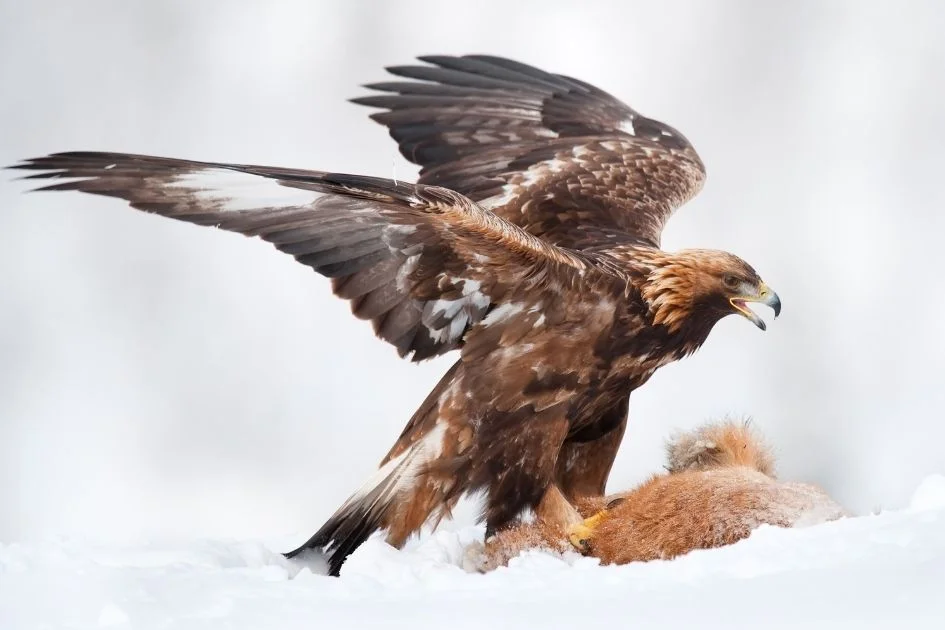
- Scientific Name: Aquila chrysaetos
- Classification: Aves
- Size: Length: 66–100 cm; Wingspan: 1.8–2.3 m; Weight: 2.8 – 6.7 kg
- Habitat: Open areas and plains
- Diet: Carnivore
- Range: Northern Hemisphere
Golden eagles eat a wide variety of tiny to medium-sized mammals, particularly raccoons and rodents. Birds and larger creatures, like juvenile deer, wolves, and coyotes, are also regularly eaten.
In addition, golden eagles are scavengers, and when the chance arises, they devour the remains of ungulates and other animals.
Working in pairs is common for this eagles species, specifically during the mating season. The unwary prey is driven to one eagle by the other, where it is then grabbed in the clutches of the waiting mate.
Golden eagles are excellent at quickly dismembering animals. They use their strong, razor-sharp talons to achieve this feat.
8. Wolverines
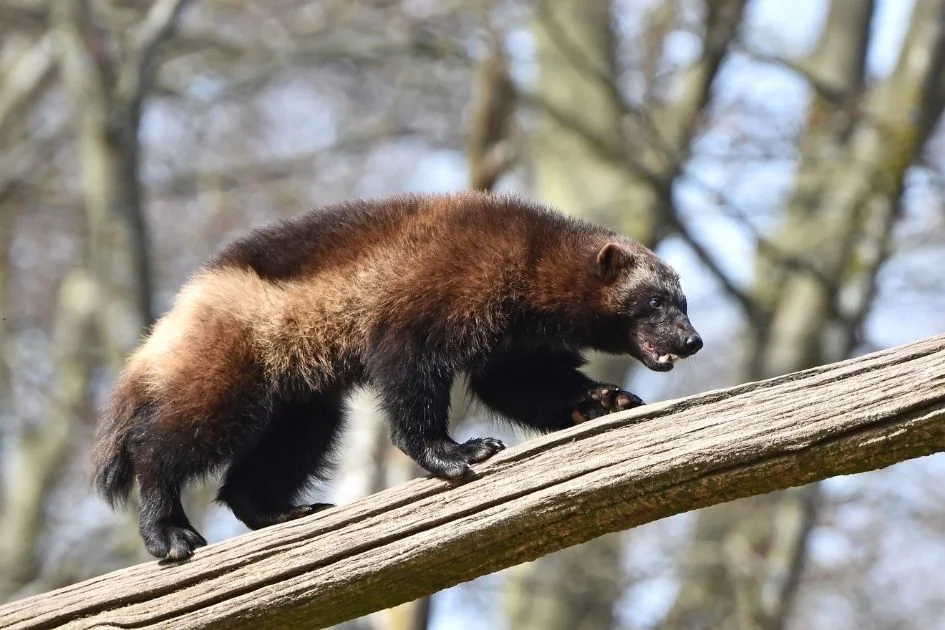
- Scientific Name: Gulo gulo,
- Classification: Mammalia
- Size: Length: 65–113 cm; Weight: 11–27.5 kg
- Habitat: boreal forests and subarctic and alpine tundra
- Diet: Carnivore
- Range: Northern Hemisphere
The wolverine is a powerful and versatile predator and scavenger whose prey mainly consists of small to medium-sized mammals. Still, the wolverine has been recorded to kill prey larger than itself.
They prey on porcupines, rodents, lemmings, caribou, voles, roe deer, white-tailed deer, moose, elk, and sheep.
They are not usually after coyotes, since their habitats only overlap in some northern parts of the continent. However, wolverines are sometimes known to stalk, kill, and eat them.
They also take advantage of a lone cub or a disabled adult coyote. These vicious small creatures won’t think twice about attacking something much bigger than themselves.
Usually, when the prey is hurt or trapped in thick snow, using a neck bite to shred the muscles and tear the throat, the wolverine can easily dispatch its prey.
They can shatter a carcass and eat right through the bone, thanks to their powerful jaws and fangs. They have been observed to eat the teeth and bones of their victims.
9. Panthers
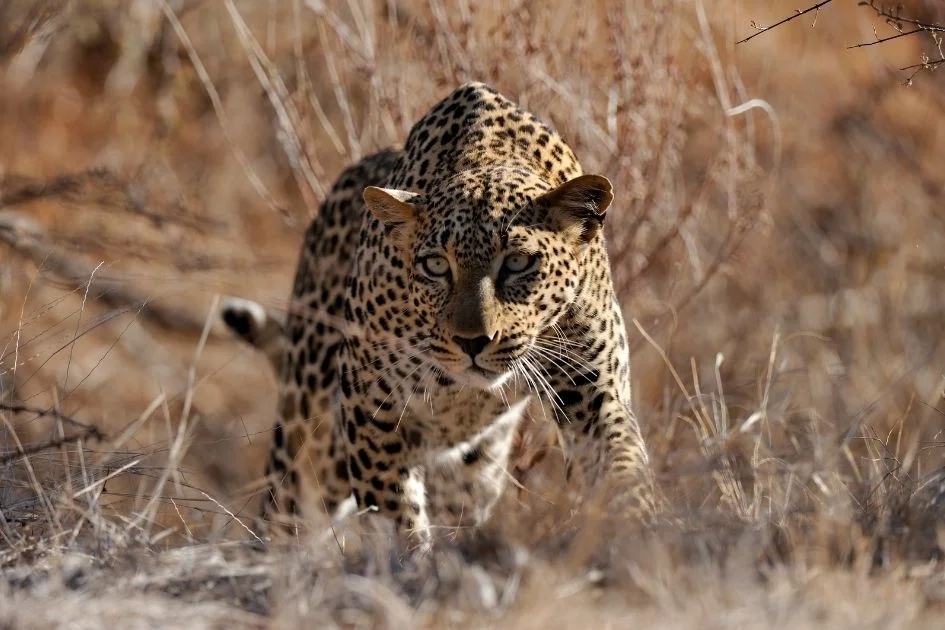
- Scientific Name: Panthera onca
- Classification: Mammalia
- Size: Length: 7 feet, Weight: 150 pounds
- Habitat: Tropical Forests
- Diet: Carnivore
- Range: Africa and the Americas
Panthers are nocturnal animals, meaning that they are mostly active at night. They are mostly carnivores, with over 90% of their diet consisting of animals like the feral hog, raccoon, white-tailed deer, and armadillo.
Panthers will occasionally kill house cats, dogs, and livestock, particularly calves. They are apex predators and aren’t picky eaters — just about any animal that moves is a meal for them.
According to studies, the individual Panthera onca normally eats up to 85 different animal species of various sizes, from reptiles and birds to large mammals, including coyotes.
Panthers hunt in surprise attacks and rely on stealth to approach prey. They are effective hunters and usually end the lives of their prey by biting through the skull, breaking the spine with a neck strike, or suffocating the prey by squeezing the throat.
The kill is often dragged and “cached” (hidden for later feasting) by covering the meal with branches, grass, and other debris.
Other Predators of Coyotes
In the wild, there are other threats aside from animals, including starvation, which could result from competition, winter, disease, or stress.
10. Humans
Numerous coyotes are exterminated by on-the-ground Animal Services personnel using firearms, baits, foot traps, poison, gas, beatings, or other methods.
About 400,000 coyotes are killed in the United States each year. At a total cost of $20 million, the government kills 80,000 or more coyotes annually.
Most of the other 320,000 coyote killings occur yearly in predator-hunting competitions around the country.
The winners receive a reward and prestige, such as a few hundred bucks or a brand-new hunting rifle. Coyote population control is the primary justification offered for doing this.
Do humans eat coyotes?
Yes, some hunters eat coyotes. However, most people don’t like it because of its strong flavor. Considering that they are gamey meat, it is not widely consumed; and as such, you would not find it for sale in supermarkets.
Coyote Adaptations – How do Coyotes Protect Themselves?
Coyotes are flexible canine species that easily adapt to any environment. They are generalists that adapt and benefit in an urban area and have been tagged as the ultimate American survivors.
However, coyotes would adapt more to open areas than forests. These are some ways they adapt to their environment:
- They use their claws and sharp teeth to catch and eat their prey.
- Their sharp vision and a good sense of smell help to detect predators.
- If they cannot detect predators early, they can run as fast as 40 miles per hour away from predators.
- They have thick fur, which helps them survive the cold during the winter season.
- Coyotes use their fur, which varies in color, to blend into their habitats to avoid being detected by predators.
- During winter, coyotes scavenge for food. They generally don’t hibernate but depend on the carcass of deer as a means of survival. Deers do not generally survive the winter period, so they die due to lack of food or hyperthermia, and coyotes eat their carcass for survival.
- Coyotes have an average lifespan of 10 to 14 years in the wild and up to 20 years in captivity.
Final Thoughts on What Eats Coyotes
Although they are fierce predators, because they are not at the top of their food chain, coyotes are on the menu for other larger predators in the wild.
They are still hunted to this day; their primary source of mortality has been limited due to the reduced hunting rate and coyotes’ trapping rate.
Still, they are not endangered because they can adapt to their environment, mark territories, and have a vast population in the Southern region, spanning through Mexico and Central America.
Featured Image Credit: Harry Collins / Getty Images
